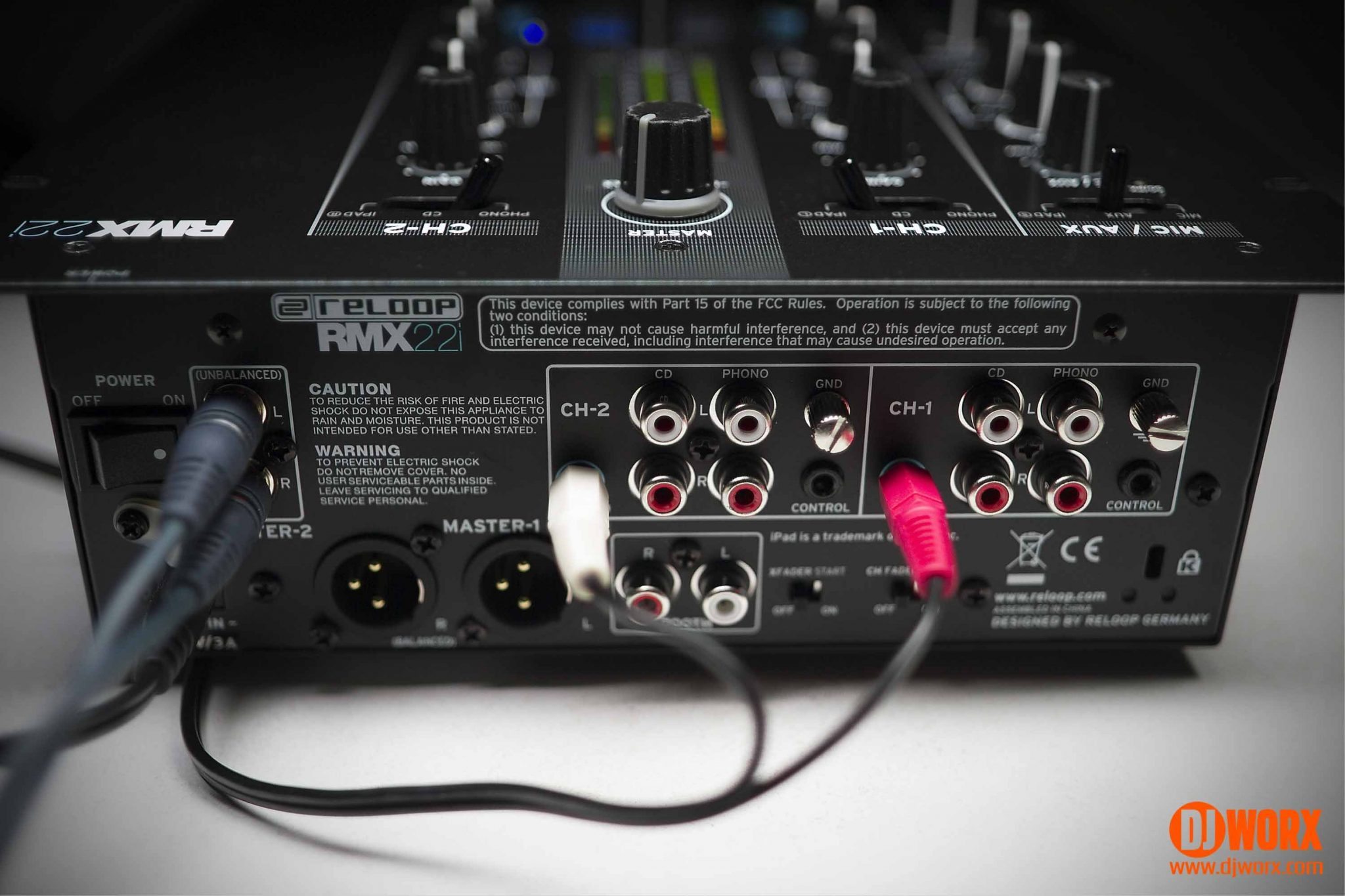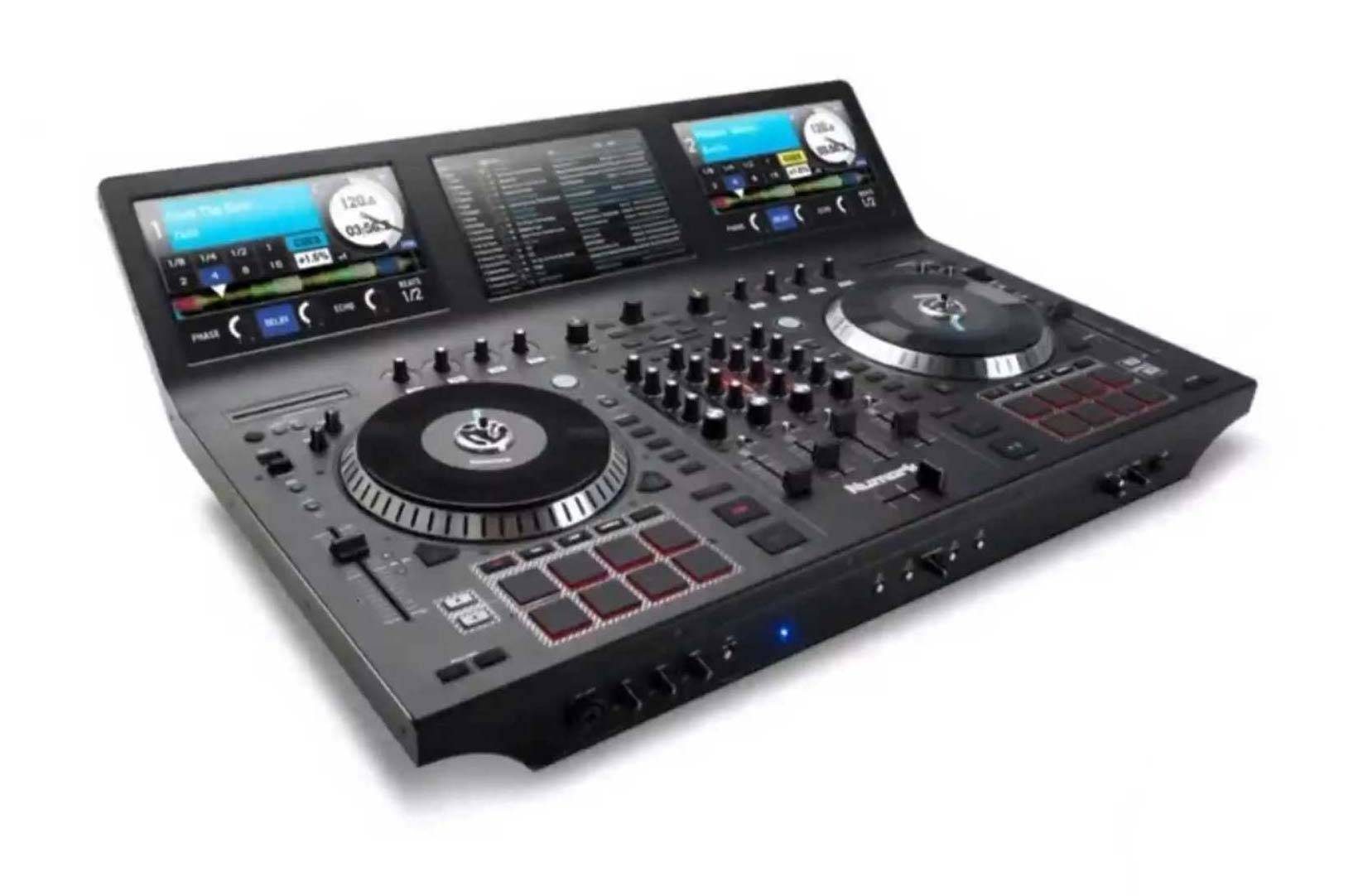Link: RMX22i/RMX33i | Price: €249/£199 — €299/£235 | Manuals: RMX22i/RMX33i
INTRODUCTION
Mixers seem to be having a small resurgence in recent times. The controller rebellion continues, help with a boost in vinyl sales and thus renewed turntable activity. For a while, mixers looked to be going the way of… well turntables because they’re pretty much tied together to some extent. But hot on the heels of Reloop’s RMX60 announced at NAMM comes not one but two mixer to occupy the bottom end of their mixer offering.
The RMX22i is technically a 2+1 channel mixer, and the RMX33i is a 3+1 channel mixer, the only difference being the extra full channel. So rather than waste time with separate reviews (the 33i would say “see the 22i review and add a channel”), I’ve decided to put them all in one complete piece. And seeing as they’re no different bar a channel, assume that I’m talking about both unless specifically mentioning one of the other.
FIRST IMPRESSIONS
Reloop has worked hard to establish its own brand ID. They’ve definitely succeeded in doing this, and these mixers scream Reloop, and fit in very happily with the rest of the family. The quality is stunning, something that is becoming pretty standard with Reloop too.
Given that they have an external power supply, I was suspicious of the weight, thus broke out the worxdriver to check for the presence of what are known as “quality enhancement plates” aka lumps of metal inserted inside to boost the weight and thus the perceived quality. I found no such plates. The faceplate is heavy (no bad thing), and everything else is metal too — every pot is metal and nutted to the inner chassis. The knobs are rubberised and totally wobble-free, and even the traditionally wobbly toggle switches are solid. Let’s just say that the RMXs are just made really well.
They are quite big for what they are. For some reason, Reloop and other companies still insist on putting lugs on the faceplate. I, and a number of people I polled on Facebook, have yet to see a single DJ use them on a mixer of this format, and all it does is make it 2” wider than it needs to be. I can understand the faceplate being a tad bigger, if only to stop the body getting knocks, but ideally they should be flush.
The layout is perfectly logical and doesn’t stray outside the established decades-old norms. I’m not going to bore you with lengthy descriptions — you can look at the pictures and read the manual to see what’s what. Instead, let’s get into details.
FADERS
On the face of it, there’s not much to tell. The cross and line faders are 45mm short bodied Alphas, the crossfader being slightly smoother than the ups. Both the crossfader and line faders have curve control — not a switch, but a proper rotary control. The slightly weird thing is that the line faders cut sharply with a 3mm lag, but the crossfader is slightly soft, being just about capable of crabs, albeit soft ones with a curve over a 2mm lag, but with a reverse switch. That said, the RMXs are Innofader compatible — Reloop sells a specific mini Innofader, but I’d like to think any would work. Of course, while breaking out the worxdriver, I was able to show that these mixers will take mini and full bodied faders, depending on your needs.
An important message to Reloop — please stop putting the Reloop logo on fader caps. I know you want to have your brand on everything seen, but it just makes scratching harder, and over time painful.
The only thing missing is a line fader reverse control, and had that been included this would have made this an amazing budget scratch mixer. You could pull the line faders out and reverse them to suit your own needs of course, but a simple switch would have been nice. Why are these details missed? This would have made the RMXs ideal budget scratch mixers that could be turned into great scratch mixers with Innofaders.
CHANNELS
The core features of the RMX22i and RMX33i are the same — two channels switchable between phono, CD and iPad. Yes iPad, because Reloop has added the ability to hook up a single iOS device via a supplied splitter cable. Basically the iPad’s stereo output is split to left (channel 1) and right (channel 2). And as long as one of the decks in djay is cueing, you’ll get mono summed decks playing into the RMX channels giving you all the features in hardware form. It’s a hack, but it works.
There’s also a flexible mic/aux/iPad (stereo this time) channel with gain and two band EQ — think bass and treble more than isolator, and because of no metering, it has a peak indicator. Below that is the cue section, with cue mix and volume control for your headphones.
This is the point where the RMX33i gets its own little section. The 33i brings a third channel, with EQ and effects. It does lack phono and iPad inputs, so only switches between line and CD. That’s it — the only difference between the RMX22i and RMX33i is an extra CD/line channel, and it’s important to point out that you can’t assign it to the crossfader.
All the fader channels get fader start, including crossfader and line faders, which is engaged by a couple of toggle switches on the back. I can’t remember seeing fader start on line faders before, but I imagine someone will correct me on that one.
Metering is handled by 12 part LEDs for channels 1 and two plus a centre one for master output. The mic/aux and channel 3 merely get a peak light, but being equipped with ears and eyes I find that’s often all I need.
EFFECTS
Taking cues from Pioneer DJMs, the RMX22i and RMX33i both come with some simple but useful instant effects. There are four — high pass/low pass filter, gate, bit crush, and white noise, the latter being a generator rather than an effect.
Each channel (excluding mic/aux) gets a large parameter control (where top dead centre with a soft detent means the effect is off), but you can only apply one effect at any one time. They all work as they should, but the gate is an interesting one. Rather than being a BPM based on/off gate with beat control that I’m used to, this one gates audio over a certain threshold, which means it’s never off-beat, and definitely is a lot of fun in use, especially using it on both channels.
Less is more when it comes to effects, and while lacking a delay or reverb, the RMX effects bring just enough to give DJ some extra spice without over-baking the mix. They all sound good, as do the mixers in general.
INS AND OUTS
If you’ve read the above, this contents of this section will come as no surprise. Channels 1 and 2 have phono and CD plus the iPod mini-jacks. The third channel on the RMX33i just has RCAs for line and CD. Master out is served by balanced XLRs and unbalanced RCAs, as well as booth out RCA, both of which have controls on the faceplate.
There are additional ports on the front — an XLR phono combo input for microphones and an additional minijack aux input. 1/4” and minijack headphone ports are on the front too with controls on top. So no surprises at all — this stuff is set in stone these days.
SUMMING UP
Having played with more mixers than I care to remember, it’s hard to get excited about ones that are crowd pleasers for the masses. They are designed to tick all the important boxes, and do so very well. We’re in a time where companies have been doing this type of thing for years, if not decades, so you would reasonably expect them to get it right. So for me, it’s more a matter of finding flaws and seeing if they’re deal breakers or not.
And I haven’t really found anything that would stop me recommending either of them. With my scratch head on, the lack of line fader reverse is a shame, and the logo on the fader caps is just plain annoying. But these are specific but minor annoyances — the RMXs are excellent mixers at an excellent price.
I know some of you will be left wanting, just aching to angrily hammer “where’s the innovation?” into the comments. But there’s is always a need for a decent and affordable two channel mixer, and apparently three channel too. And that’s what the RMX22i and RMX33i are. They are the products that fulfil an actual need — they keep the lights on, pay the rent, and put food on the table. Innovation is for another less profitable time.
When you look at the feature set, there’s a little something for everyone. These RMX mixers are for budget conscious DJs, mobile DJs, scratch DJs, and anyone who wants a solid frills-free workhorse as a primary or perhaps even backup mixer. What I don’t get is the need for both of them in the market. With just a €50 difference, I can see one of them sitting on the shelves, or at least one diluting the sales of the other. Do you save yourself €50 and forego the extra channel, or say sod it and get the extra channel just in case for just €50 more? I guess at this price point, €50 is a large percentage of the ticket.
There’s no doubt that both are great mixers though. Rock solid, well specced, effects and scratch-worthy makes them a sound purchase. So if you’re in the market for a budget 2 or 3 channel mixer, the RMX22i and RMX33i fit the bill perfectly. If you’re searching for affirmation — I like them both, and I would personally go for the RMX33i for flexibility.
RATINGS
QUALITY: Total bricks. Built like a tanks.
FEATURES: Effects, solid mic/aux channel, with upgradable faders. Fully featured for the price.
VALUE FOR MONEY: In comparison to its peers, excellent.
THE BOTTOM LINE
The RMX22i and RMX33i mixers are rock solid entry level additions to Reloop’s growing range. Keep it simple or snag an extra channel? That’s the only decision to make between them.






























